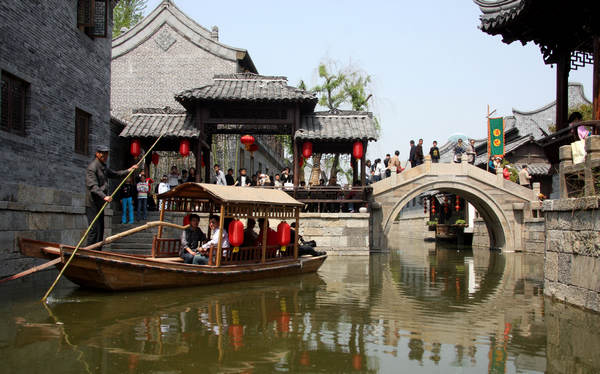Tourist attractions come at a high price
Updated: 2012-04-30 07:40
By Jiang Xueqing and Li Jing (China Daily)
|
|||||||||||
Sector relying too much on expensive tickets, Jiang Xueqing and Li Jing report in Beijing.
Holiday time, and thoughts turn to visiting places of interest and scenic areas to enjoy, at leisure, nature's bounty. But rising admission prices may cast a shadow over such plans. During the Tomb Sweeping holiday in April, the ancient town of Taierzhuang in Zaozhuang, Shandong province, quietly raised holiday ticket prices, for tourists, from 100 yuan ($15.90) to 160 yuan. Taierzhuang is not alone.
From May 8, ticket prices for the Jinggangshan Scenic Area in the southwest of Jiangxi province will go up from 226 yuan per person to 260 yuan.
According to a report in the Beijing News, nearly half of the 130 top-level scenic areas nationally excluding those in Hong Kong, Macao and Taiwan have ticket prices which are now in excess of 100 yuan. About 90 percent of more than 1,000 Internet users said in an online poll that they think a price below 100 yuan is more acceptable.
Tourism experts said the price hike is reasonable, to a certain extent. Commodity and service costs are rising generally. However, government investment in tourist sites is lagging, and this puts the onus on operators to boost income. But the system is not uniform and prices vary.
The public is in the dark.
"In theory, scenic areas are public property, but this is a naive viewpoint," said Zhang Lingyun, vice-dean of the tourism institute of Beijing Union University. "In reality, the local government usually treats these natural resources as cash cows to revitalize the local economy."
Taierzhuang was a provincial business center during the Ming (1368-1644) and Qing (1644-1911) dynasties after the route of the Beijing-Hangzhou Grand Canal was changed. It later became a battlefield where the Chinese won a major victory over the Japanese in April 1938 during the War of Resistance against Japanese Aggression (1937-45).
Seeing its tourist potential, the Zaozhuang municipal government launched a project in 2009 to rebuild the ancient town by restoring the docks and renovating its courtyard houses and other historical sites.
The town had a "tourist test run" during the 2010 May Day holiday and received more than 2.4 million visitors by the end of last year.
When the town first opened to tourists the admission price was 50 yuan. This rose later to 70 yuan and more than tripled within two years.
"Zaozhuang used to rely on its rich coal reserves until they fell below 600 million tons in 2006," said Wang Zhan, the publicity officer for the ancient town's administrative committee.
"The city government realized its resources would be exhausted in less than 20 years and turned to tourism."
Billions of yuan were invested and since 2008 nearly 2 billion yuan in tourist cash has arrived.
Wang noted that Zaozhuang had no tour bus and no local tour guides when it decided to become a tourist center but it now has 105 tour buses and 400 local tour guides. Until recently, the city had only 4,700 hotel beds with an occupancy rate lower than 40 percent. During the last three years, the city has seen the arrival of 78 more hotels and 14,000 more hotel beds. Ten five-star hotels have been built or are under construction but they still cannot meet demand.
Today's Top News
President Xi confident in recovery from quake
H7N9 update: 104 cases, 21 deaths
Telecom workers restore links
Coal mine blast kills 18 in Jilin
Intl scholarship puts China on the map
More bird flu patients discharged
Gold loses sheen, but still a safe bet
US 'turns blind eye to human rights'
Hot Topics
Lunar probe , China growth forecasts, Emission rules get tougher, China seen through 'colored lens', International board,
Editor's Picks

|

|

|

|

|

|






